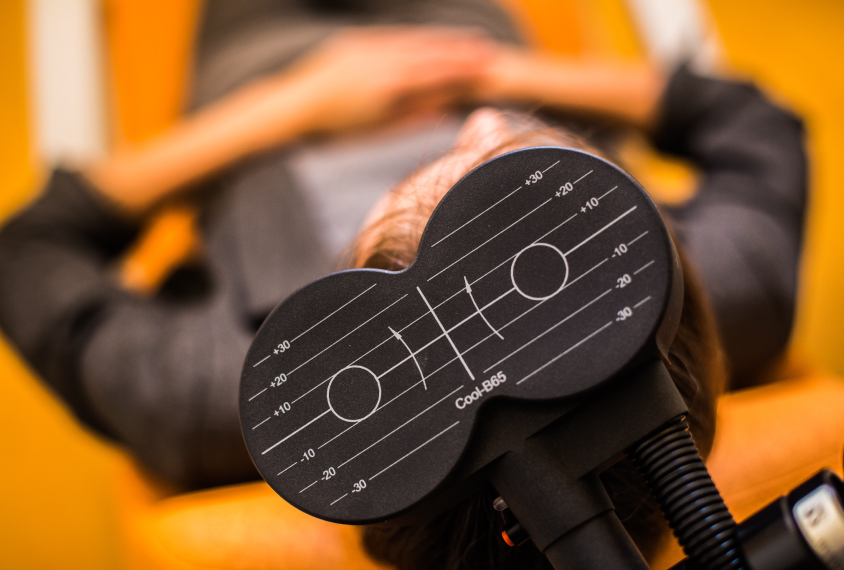
GARO / PHANIE / SCIENCE PHOTO LIBRARY
THIS ARTICLE IS MORE THAN FIVE YEARS OLD
This article is more than five years old. Autism research — and science in general — is constantly evolving, so older articles may contain information or theories that have been reevaluated since their original publication date.
Researchers have used transcranial magnetic stimulation to show that people with fragile X syndrome have weak ‘inhibitory’ signals, those that dampen neuronal activity in the brain. The findings were presented Sunday at the 2017 Society for Neuroscience annual meeting in Washington, D.C.
Fragile X syndrome is caused by a mutation in the gene FMR1. People with the syndrome have intellectual disability and, often, features of autism.
The new work supports the idea that autism and related conditions stem from too little inhibition in the brain. Some data in animals extend this theory to fragile syndrome. Mice missing FMR1, for example, show poor inhibition and highly excitable neurons1,2. But no one has garnered data showing this imbalance people with fragile X.
“Our results show for the first time in humans with fragile X the existence of an imbalance in the inhibition and excitation ratio,” says Florence Morin-Parent, a graduate student in Jean-Francois Lepage’s lab at the University of Sherbrooke in Quebec, Canada, who presented the findings.
The team used transcranial magnetic stimulation (TMS), in which a magnetic field is applied briefly to a small brain area to activate or deactivate neurons. Researchers can measure how excitable the cortex is by measuring how much stimulation it takes to cause the neurons to fire.
Signal separation:
Lapage’s team applied TMS to the motor cortex, an area on the brain’s surface that governs movement. Activated neurons in the region produce a current that travels from the brain down the arms and causes a twitch in the corresponding muscles in the hand. Electrodes placed on the hand can pick up the signal, known as the ‘motor evoked potential,’ or MEP.
When two pulses of TMS are delivered one after the other, competing inhibitory and excitatory neurons produce distinct effects. One class of inhibitory neurons decreases the MEP if the two pulses are delivered about 5 milliseconds apart. At an interval of 10 milliseconds, excitatory neurons come into play, boosting the MEP.
Researchers can measure these effects on the final signal to compare the strength of inhibitory and excitatory neurons.
In the study, the researchers performed this procedure in 19 people with fragile X syndrome and 19 controls. They found that, overall, the individuals with fragile X have weaker inhibition and greater excitation in the motor cortex than controls do. The weaker inhibition leads to a stronger MEP in the people with fragile X when pulses are 5 milliseconds apart.
Inhibitory neurons signal using the neurotransmitter gamma-aminobutyric acid, and excitatory ones use the neurotransmitter glutamate. Researchers could use TMS and medications that act on these signaling systems to further elucidate the dynamics of neuronal communication in fragile X syndrome. They could also use the technique to identify a pattern of responses in people that could serve as a potential biomarker for the syndrome, Morin-Parent says.
For more reports from the 2017 Society for Neuroscience annual meeting, please click here.
By joining the discussion, you agree to our privacy policy.